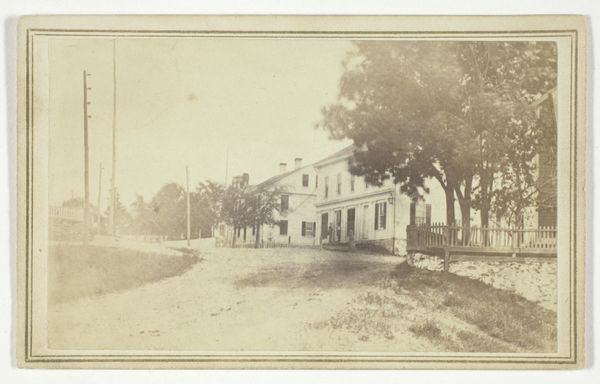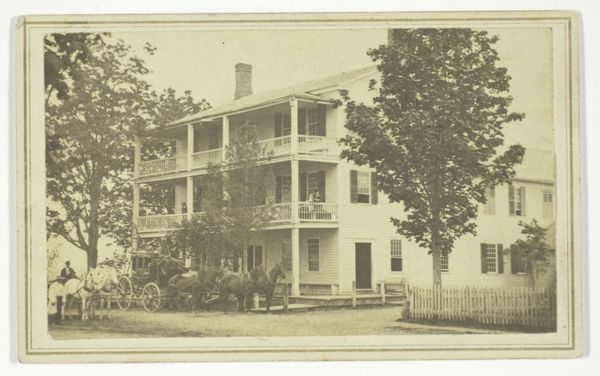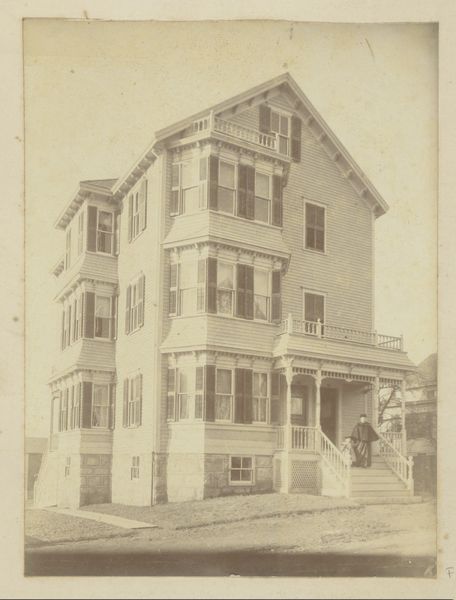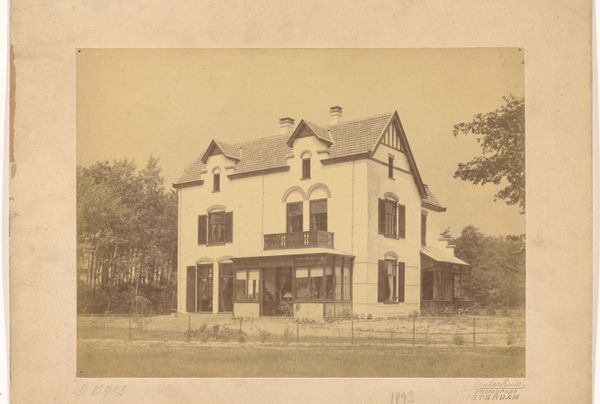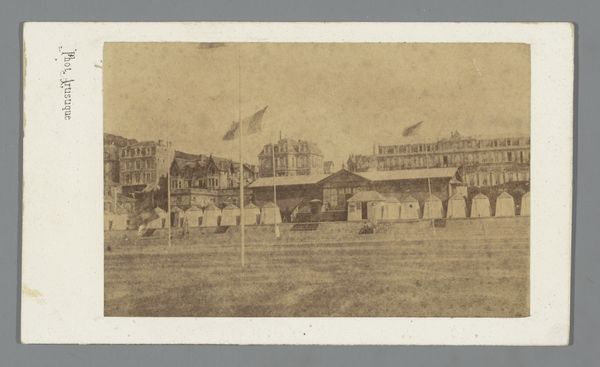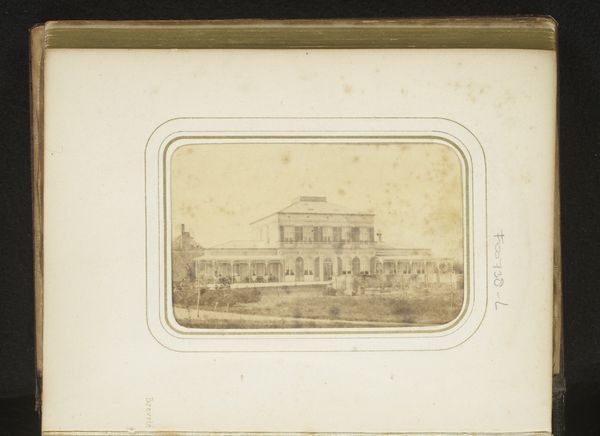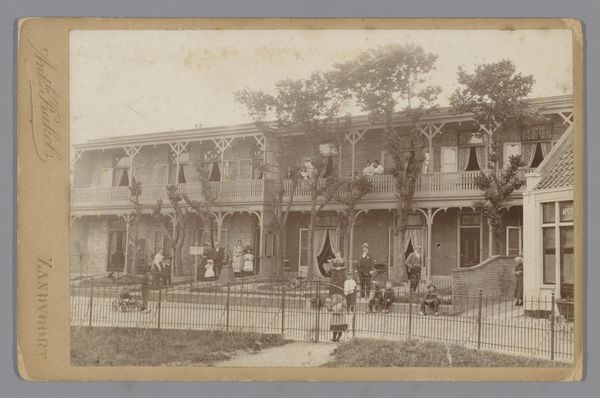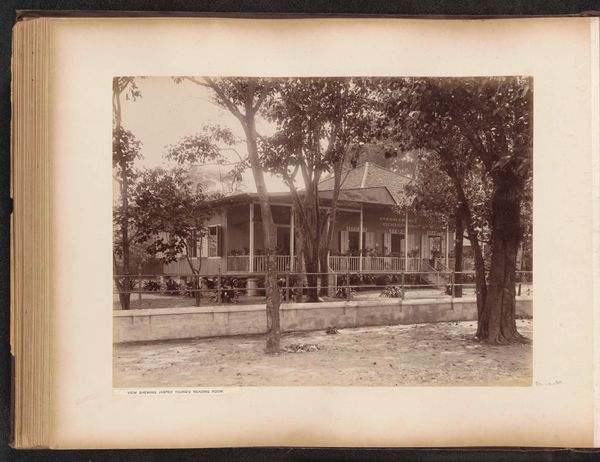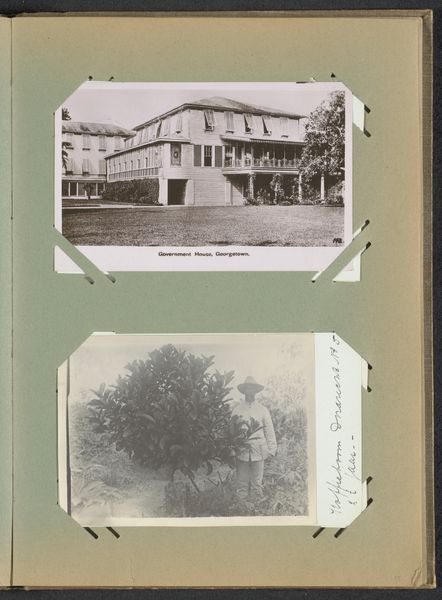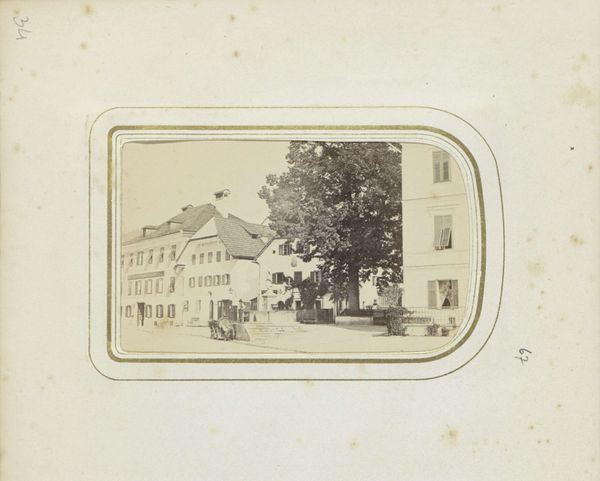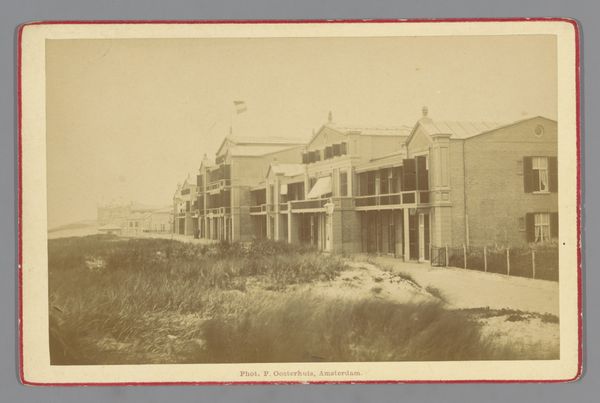
photography
#
16_19th-century
#
landscape
#
photography
#
hudson-river-school
#
realism
Dimensions: 8.9 × 5.3 cm (image); 10 × 6.2 cm (card)
Copyright: Public Domain
Curator: This photograph, simply titled "Cushing's Photographic Rooms, Woodstock, Vt.", dates from the 19th century. It’s a rather unassuming piece, really. Editor: Unassuming perhaps, but it strikes me as serene. A placid depiction of everyday life, wouldn’t you agree? There’s an undeniable quiet dignity embedded in this depiction of 19th-century rural life. Curator: Serenity is certainly a reading. Notice the stark horizontality – the building, the porch line, the implied street. They create these rigid strata that suggest order and stability. A deliberate formalism. Editor: Deliberate maybe, yet I'm compelled to consider the photographic rooms. Who was going in and out of there, and how were these individuals contributing to the local economy or social order? Think about what a photographic portrait meant at that time: Who had access? What power dynamics are encoded here? Curator: You're drawn to the socioeconomic dimension. I am stuck, fascinated, by how it adheres to the core tenets of Realism, capturing, in sharp detail, this building's façade. Editor: Sure, realism. But consider what kind of "reality" is on display. It is, after all, a business front, an enterprise that serves as a reminder of how the act of capturing likeness had real implications in terms of commerce, politics, representation, and social memory. Also, look at the horse-drawn carts along the roadside and the flag post: I want to know about how all the inhabitants navigated race, gender, class, and citizenship. Curator: These historical interpretations can often neglect the basic aesthetic construction of the artifact. Before our own narratives, there is a calculated arrangement of tone and structure worth regarding in itself. It asks a central question: What is it? A long, narrow structure made taller through careful crop of the central construction, that has very little business with questions of local inhabitants at first glance! Editor: I disagree that these questions are external to the piece itself. The "what" is inseparable from the "who," "when," "where," and "why." Otherwise, formalism serves simply to reinforce old hierarchies about whose story matters when considering such seemingly banal landscapes. Curator: All worthwhile avenues to consider. Each adds layers to a beguilingly simple visual document. Editor: It all connects, as all things always do, to issues of visibility and power. An unburdening of that dynamic might be the truly difficult thing to picture here.
Comments
No comments
Be the first to comment and join the conversation on the ultimate creative platform.
